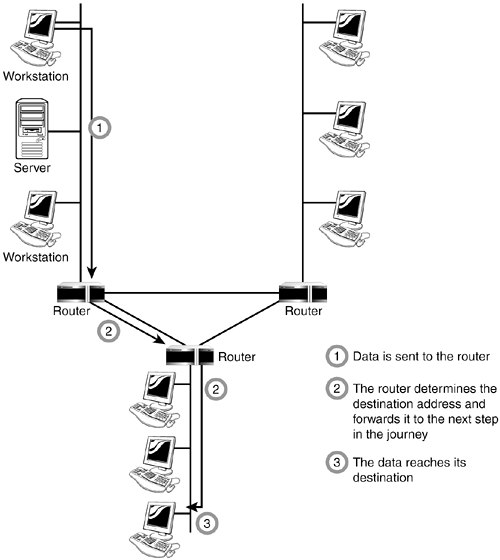A router derives its name from the fact that it can route data it receives from one network onto another. When a router receives a packet of data, it reads the header of the packet to determine the destination address. Once it has determined the address, it looks in its routing table to determine whether it knows how to reach the destination and, if it does, it forwards the packet to the next hop on the route. The next hop might be the final destination, or it might be another router. Figure 5 shows, in basic terms, how a router works.
Figure 5 How a router works.
As you can see from this example, routing tables play a very important role in the routing process. They are the means by which the router makes its decisions. For this reason, a routing table needs to be two things. It must be up-to-date, and it must be complete. There are two ways that the router can get the information for the routing tablethrough static routing or dynamic routing.